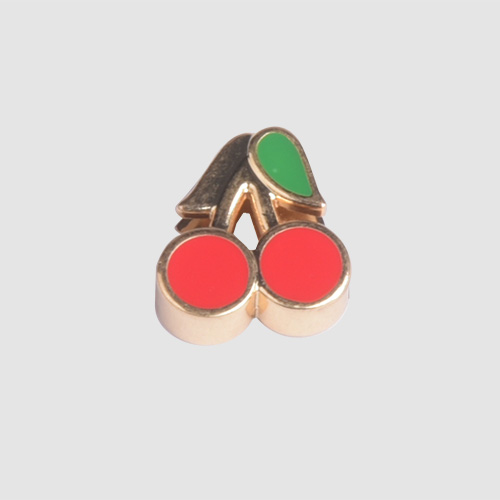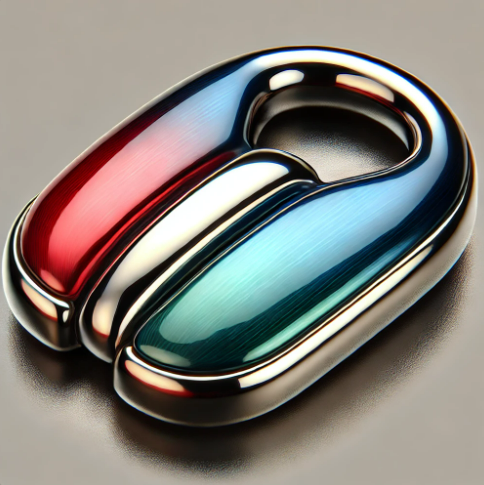Rubber Coating and Epoxy Coating in Fashion and Luggage Hardware
Understanding Rubber Coating and Epoxy Coating in Fashion and Luggage Hardware
In the fashion and luggage industries, the finish and durability of hardware components play a crucial role in the overall quality and appeal of the final product. Two widely used finishing techniques for hardware are rubber coating and epoxy coating. These processes not only enhance the aesthetic appeal of components but also contribute to their functional performance. Understanding the differences between rubber coating (often referred to as "磨胶") and epoxy coating ("滴胶"), along with their respective advantages, can help designers and manufacturers choose the right technique for their specific applications.
Rubber Coating (磨胶)
Rubber coating, or "磨胶," involves applying a layer of synthetic rubber to the surface of a hardware component. This coating is typically matte or semi-matte, providing a smooth and tactile finish. It is widely used in applications where grip and durability are important.
Advantages of Rubber Coating:
Improved Grip: One of the key benefits of rubber coating is the enhanced grip it provides. This is particularly important for hardware components like zipper pullers, handles, and toggles on bags and apparel. The rubberized surface ensures that these elements are easy to grasp and manipulate, even in wet or slippery conditions.
Durability: Rubber-coated hardware is known for its resistance to wear and tear. The rubber layer protects the underlying metal from scratches, dents, and other forms of damage, extending the lifespan of the component. This makes rubber-coated hardware ideal for items that are subjected to frequent use or rough handling.
Soft Touch: The rubberized finish offers a soft, pleasant touch, which can enhance the overall user experience. This tactile quality is particularly valued in premium fashion items where the feel of the product is as important as its appearance.
Versatility in Design: Rubber coatings can be produced in a wide range of colors, allowing for customization to match or contrast with the fabric or leather of the product. This flexibility makes it easier for designers to create cohesive and visually appealing products.
Common Applications in Fashion and Luggage:
Rubber coating is commonly used on zipper pullers, bag handles, snaps, and other functional elements where a secure grip and durability are essential. It's particularly popular in outdoor gear, sportswear, and casual fashion where products are exposed to the elements and require a non-slip surface.
Epoxy Coating (滴胶)
Epoxy coating, or "滴胶," involves applying a layer of epoxy resin to the surface of a hardware component. The epoxy resin is often clear or colored and cures to form a glossy, dome-like finish. This process is also known as doming, and it is primarily used to create a decorative and protective layer over logos, emblems, and tags.
Advantages of Epoxy Coating:
High Gloss Finish: Epoxy coating provides a shiny, glass-like finish that can enhance the appearance of hardware components. The high-gloss surface is particularly effective at making logos, brand tags, and emblems stand out. This finish gives the component a premium look, which is often associated with luxury brands.
Protection: The epoxy layer acts as a protective barrier against environmental factors such as moisture, UV rays, and abrasion. This protection helps preserve the appearance and integrity of the underlying design or logo, ensuring that it remains vibrant and intact over time.
Depth and Dimension: The domed effect created by the epoxy coating adds depth and dimension to the component, making it visually more appealing. This three-dimensional quality can enhance the overall design of the product, making it more attractive to consumers.
Versatility in Application: Epoxy coatings can be applied to a variety of surfaces, including metal, plastic, and fabric, making them a versatile option for a wide range of products. The coating can also be tinted with different colors, offering additional customization options for designers.
Common Applications in Fashion and Luggage:
Epoxy coating is frequently used on logos, brand tags, zipper pulls, and other decorative elements in fashion and luggage. It is especially popular in high-end fashion items, handbags, and luggage where the brand's logo needs to be prominently displayed and protected. The domed finish not only enhances the visual appeal of the component but also protects it from everyday wear and tear.
Rubber coating and epoxy coating are both valuable finishing techniques in the fashion and luggage industries, each offering distinct advantages. Rubber coating is favored for its durability, grip, and soft touch, making it ideal for functional components that require frequent handling. In contrast, epoxy coating is chosen for its high-gloss finish, protective qualities, and ability to add depth to logos and decorative elements. Both techniques are integral to creating high-quality products that meet the demands of modern consumers, whether in outdoor gear, casual fashion, or luxury goods. Understanding the differences between these coatings allows designers and manufacturers to select the best option for their specific applications, ensuring both the aesthetic and functional success of their products.






